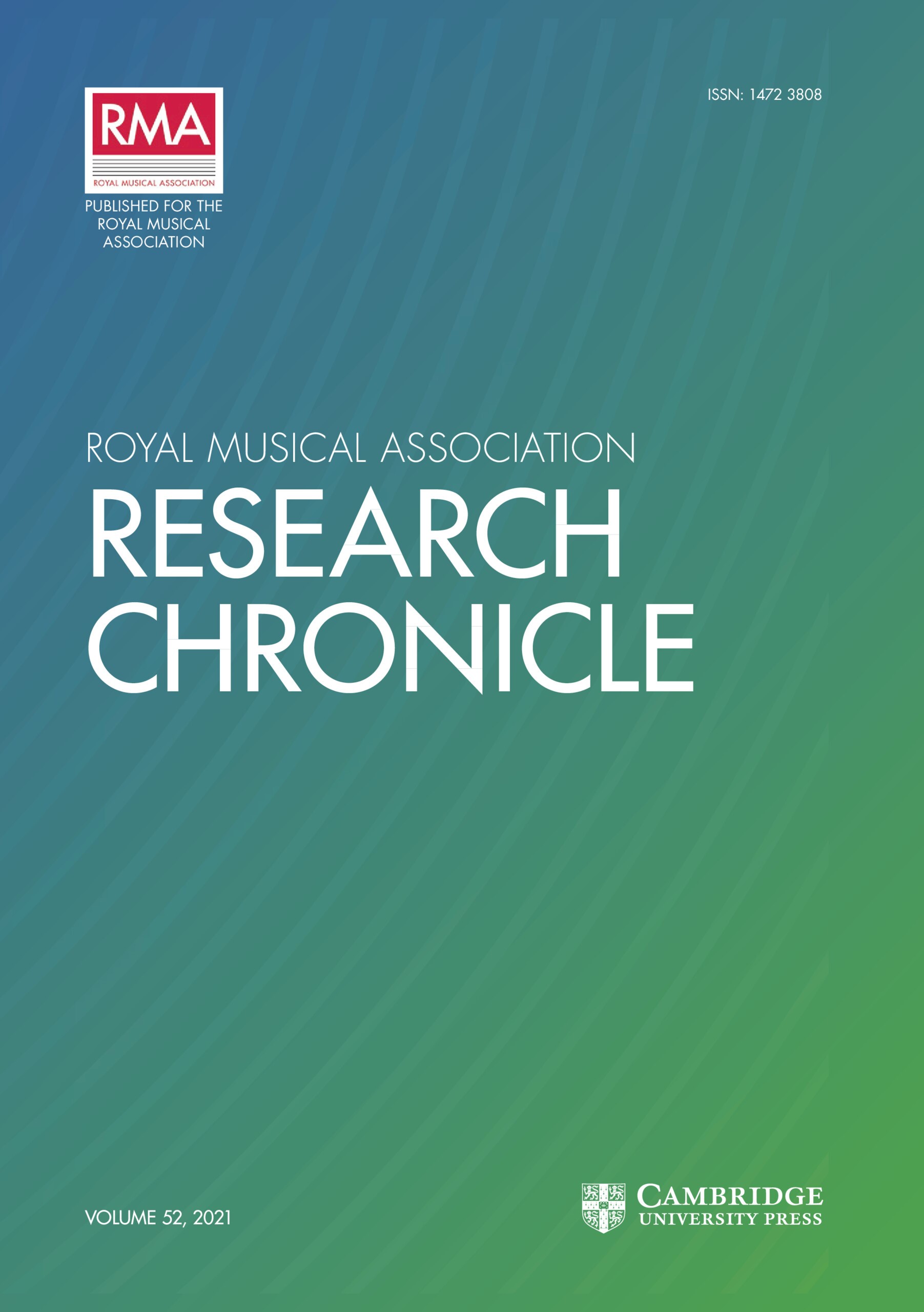Article contents
An Early Source of the English Keyboard Suite
Published online by Cambridge University Press: 01 January 2020
Extract
Lambeth Palace Library MS 1040 has received less attention than a companion volume, MS 1041 (inscribed ‘The Lady Ann Blount’ on the first leaf). Although there appears to be no musical connection between the two manuscripts, they have been together for a long time. The Library's old catalogues do not allow the volumes to be identified with certainty, but if ‘Two Musick Books’ refers to them they have been in the collection since at least the mid-eighteenth century.
- Type
- Articles
- Information
- Copyright
- Copyright © Royal Musical Association, 1995
References
Notes
1 Facsimile in Miscellaneous Manuscripts… Lambeth Palace MS. 1041 (songbook belonging to “the Lady Ann Blount'), ed. Elizabeth Brickford Jorgens, English Song 1600–1675, 11 (New York, London, 1987).Google Scholar
2 The B minor saraband is written with only F sharp in the key signature. C is usually left unsharpened.Google Scholar
3 John Mercure was a lutenist, probably French, who in 1641 was appointed to a post at the English court which had fallen vacant on the death of Robert Dowland. Compositions by Mercure appear in a number of keyboard manuscripts.Google Scholar
4 An exceptional example of an earlier keyboard piece in B is William Tisdale's Pavana Chromatica in the Fitzwilliam Virginal Book, which also contains an anonymous almain (no. CCXXVII) in E. Benjamin Cosyn began his virginal book (British Library MS R.M. 23.1.4), dated 1620, with his own prelude in E.Google Scholar
5 Watkins Shaw, The Succession of Organists of the Chapel Royal and the Cathedrals of England and Wales from c. 1538 (Oxford, 1991), 202–3; also P. R. Granger, ‘Ayleward, Richard’, The New Grove Dictionary of Music and Musicians (London, 1980), i, 755. There is no foundation for Granger's suggestion that some of the manuscript keyboard pieces with Ayleward's name attached are by an earlier composer.Google Scholar
6 Ph.D. Dissertation, University of Manchester, 1989, i, 135. The printed volumes Courtly Masquing Ayres (1662) and Musicks Hand-maide (1663) are exceptions: see Table 2. Ayleward's pieces are also likely to have been written after 1660.Google Scholar
7 Ian Spink, English Song: Dowland to Purcell (London, 1974), 116.Google Scholar
8 MS 1040 is not among the sources drawn upon by Rosamond E. M. Harding, A Thematic Catalogue of the Works of Matthew Locke (Oxford, 1971).Google Scholar
9 The Diary of Samuel Pepys, ed. Robert Latham and William Matthews (London, 1970–83), ix, 138.Google Scholar
10 Bodleian Library MS Wood D 19 [4].Google Scholar
11 Thomas Greeting's The Pleasant Companion, or New Lessons and Instructions for the Flageolet was published in 1661.Google Scholar
12 Note in British Library copy of sale catalogue.Google Scholar
13 Peter Williams, Twelve Voluntaries for Organ or Harpsichord by William Boyce or Maurice Greene (New York, London, 1969), p. iii. Professor Williams recalls that he worked from a microfilm provided by Thurston Dart.Google Scholar
14 Modern edition in The First Part of Musick's Hand-Maid, edited by Thurston Dart (London, 1969), no. 45, p. 21.Google Scholar
15 There are some textual differences, the pieces do not appear in the same order, and the earlier layer of MS 1040 may have been completed before Musicks Hand-maide was published. The Golden Grove seems to have been copied from a source which associated it with the corant that follows it in MS 1040 and the two Christ Church manuscripts.Google Scholar
16 Modern edition in M. Rollin and J.-M. Vaccaro, Oeuvres des Mercure (Paris, 1977), 112.Google Scholar
17 Modern edition, ed. Dart, no. 7, p. 5.Google Scholar
18 Ibid., no. 8, p. 5.Google Scholar
- 1
- Cited by


